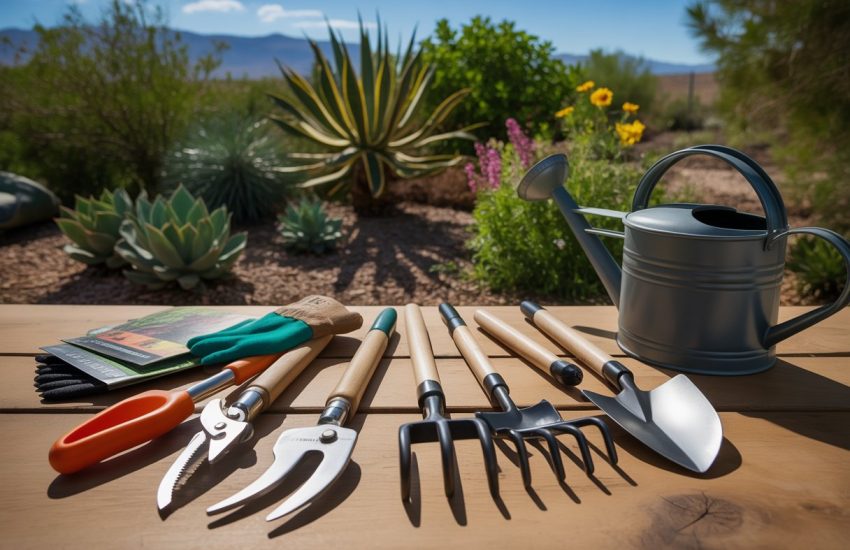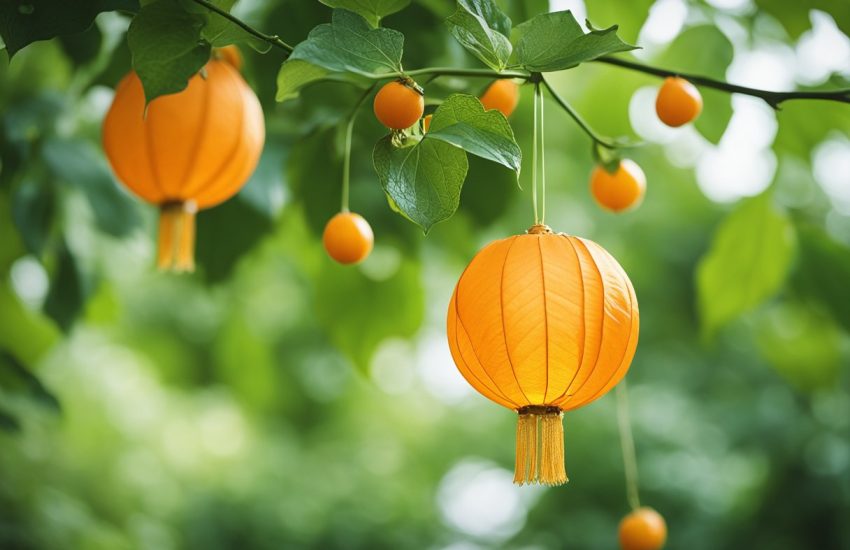Marigold Seeds: How to Harvest & Save
Marigolds, which are large and gorgeous, will brighten your garden in the sun’s colors: radiant white, vivid orange, dazzling yellow, warm red, and enriched gold. These plants are brightly colored flowers native to Central and South America. They’re stunningly attractive and really simple to grow! To grow Marigolds, you need to know all about Marigold Seeds and how to harvest and save them. If you want to learn how to harvest and save Marigold seeds, keep reading!
What Are Marigolds?
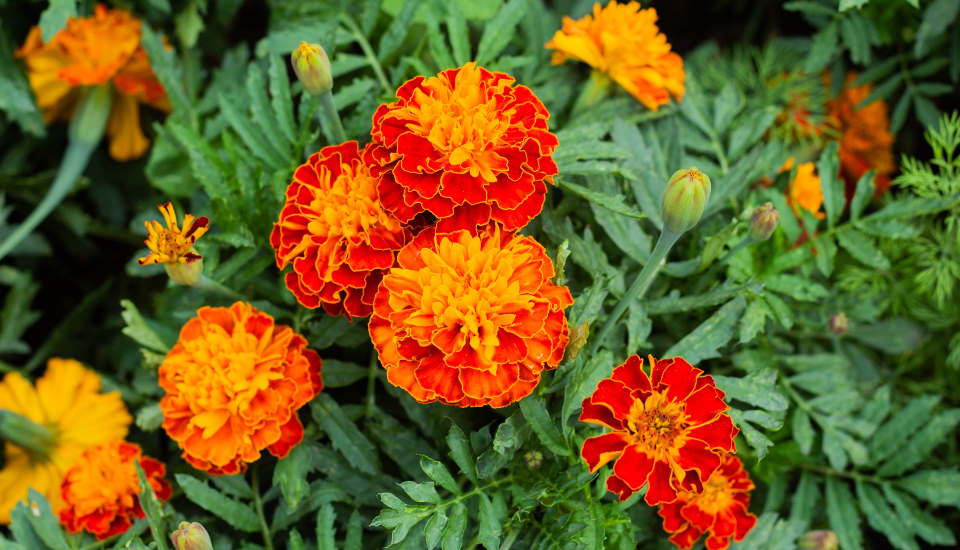
Marigolds are a type of plant that is very adaptable and dependable in various growing environments. These plants allow inexperienced gardeners to achieve such beautiful flowers with vivid gold and copper blossoms that thrive in their flower beds. The marigold is one of the most colorful and straightforward annuals. They are so easy to grow, so you don’t have to worry about how to grow them.
These plants grow quickly and easily once planted. Most of these plants thrive in direct sunlight and are unfazed by hot and sunny conditions. This flower’s popularity stems from its propensity to bloom continuously throughout the summer, drawing insects and color-loving enthusiasts both. You only have to remember to deadhead the blooms to keep them coming!
Different Types of Marigolds
It is believed that these plants have around 50 species. Still, among these species, there are only a few species that are usually seen in gardens. These species are Tagetes erecta, Tagetes patula, Tagetes tenuifolia, and Calendula officinalis. Let’s talk about these species!
Tagetes erecta is also known as African or Mexican Marigolds. They are the tallest species among their other varieties. They grow 20-40 inches long, and like their other species, they love the sunlight, so they thrive in hot climates.
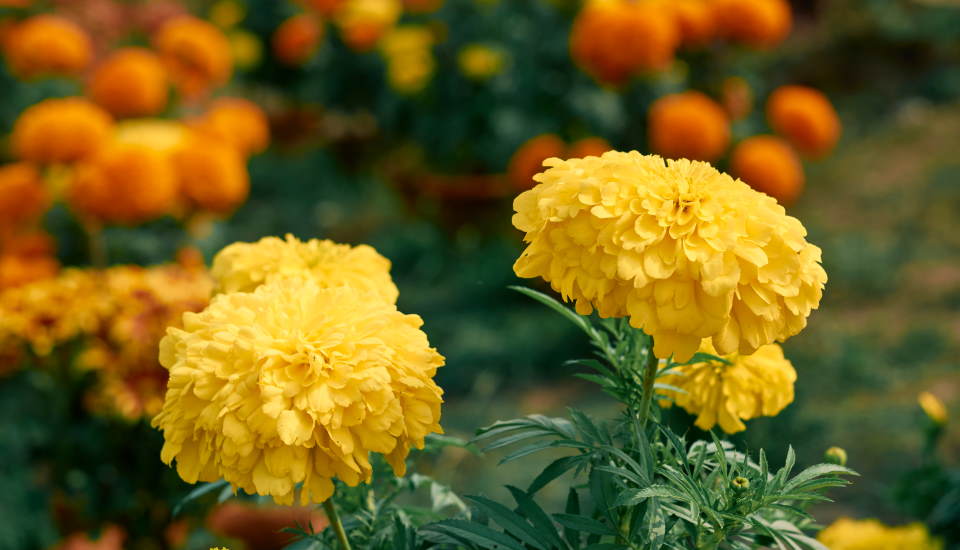
Tagetes patula is also known as French Marigolds but doesn’t fall for their name because they have no relation to France. They are native to Guatemala and Mexico. And unlike the first specie we discussed, Tagetes patula is not tall. In fact, it only grows 5-25 inches at best.
Tagetes tenuifolia is also known as golden or signet marigolds. Unlike its other species, Tagetes erecta and Tagetes patula, this specie’s plants create smaller floral heads. You can even use these heads in some dishes since they have some sour and lemony flavor.
Calendula officinalis is also known as a poet’s or English Marigolds. This specie’s most unique feature is its receptive to cold weather. So, it can tolerate colder climates. It can grow up to 10-25 inches. Also, its flower can be eaten.
When Should I Plant Marigolds?
These plants are endemic to the Western Hemisphere. They grow wild from the Southwest to Central and South America. As mentioned before, these plants love direct sunlight and can typically tolerate scorching summer temperatures. These plants prefer warm, dry weather, although they may be grown well outside in any climate if the temperature stays above 40°F. Garden marigolds are mostly annuals.
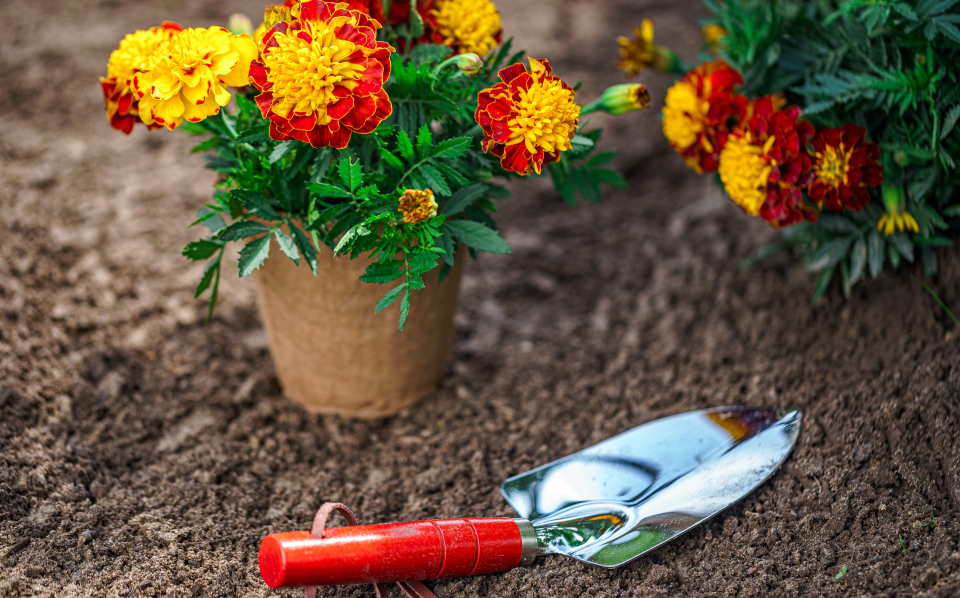
These plants are not frosting tolerant, despite their hardiness. They shouldn’t be sowed or planted outside until the risk of frost has passed. In the spring, sow seeds straight into the garden once the soil has warmed up.
Seeds can be started indoors, but they germinate so quickly outside that there’s no point. You can start cultivating marigold seeds six to eight weeks before the last frost date if you reside in a location with a late last frost date. Once the soil is warm—above 40°F—seedlings will be ready to sow. In warm weather, these plants sprout in approximately a week, and plants produce blooms in around eight weeks.
How Should I Plant Marigolds?
If you can wait until the ground warms enough, it’s fairly easy to germinate marigold seeds outside. French marigolds are easy to grow from seed, but you typically want to buy African marigolds as young plants. Make a six-inch-deep planting hole in the soil with a shovel. Add a bit of granular fertilizer to the planting hole if the soil is nutrient-deficient.
A 5-10-5 will suffice. Sow marigold seeds approximately one inch apart in moistened soil. Apply a thin layer of dirt on top. Thin the seedlings while they are still little. Try to put 8 to 10 inches between French and signet types. The larger African marigolds should be spaced apart by at least 10 to 12 inches. Use a soil-based potting mix when growing in pots.
How Should I Harvest and Save Marigold Seeds?
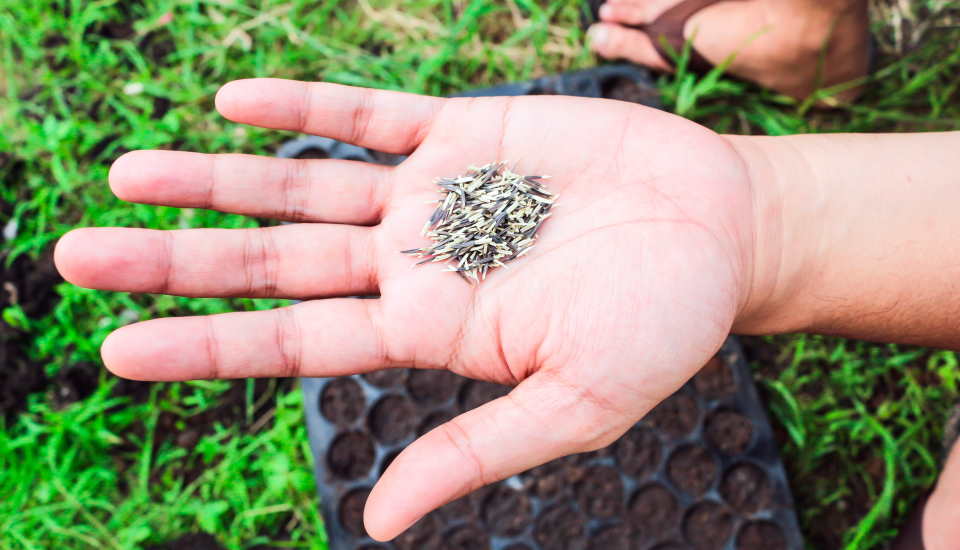
When it comes to annual flowers, these plants are hard to beat. These plants, as previously stated, are easy to grow, low care, and a consistent source of vibrant color. They are easy to cultivate from seed and produce bright and abundant colors throughout the season. They’re also known for repelling hazardous insects, making them a great low-impact and completely organic pest control option.
You won’t have to buy new plants or seeds for the following growing season if you learn how to conserve their seeds. Marigold seeds aren’t particularly costly to harvest and save, but they must be replaced every year. This year, why not try gathering and saving marigold seeds? It’s simple to harvest and save marigold seeds. To harvest and save the seeds during the winter, just take the seeds from the blossoms and let them air dry. Let’s learn how to harvest and save marigold seeds from marigold flowers!
Harvesting Marigold Seeds
It’s simple to harvest and collect seeds from marigold blossoms. Before harvesting and saving marigold seeds, you must first wait for the seeds to mature. The first step is to wait for the blossoms to wilt and dry out. This means you’ll have to keep your withering and dying plant blooms on the plants for a while, as the seeds won’t be ready if you pluck them off as soon as they start to flag; believe me, that is not the best way to harvest and save them.
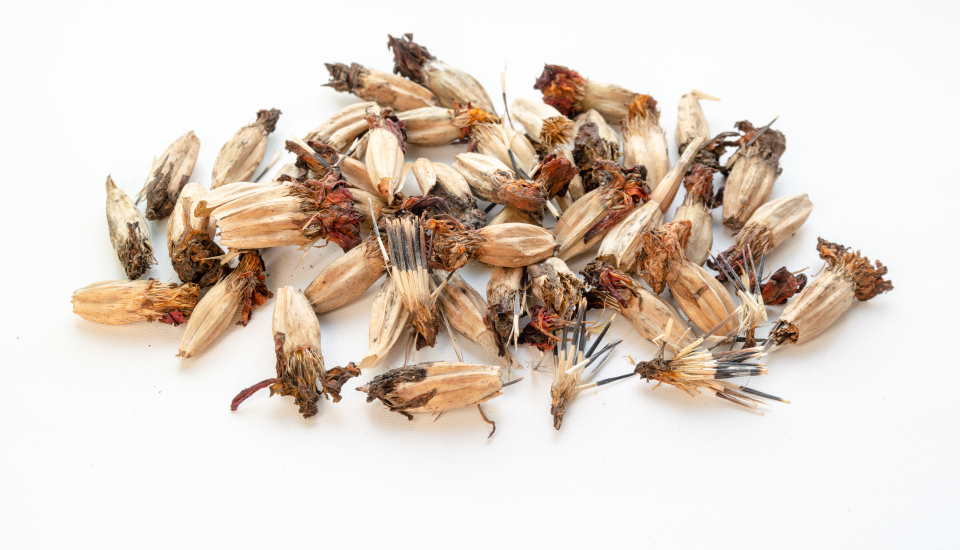
When the petals are dried and the bottom of each flower becomes brown, it’s time to collect the seeds. It should be primarily brown, with a smidgeon of green at the bottom. It’s less likely to have started rotting because it’s green. To avoid damaging the seeds, cut the blossom top from the plant just a few centimeters down the stem.
The seeds must be dried in order to survive till the next year. Keep the paper towel away from direct sunlight. Before harvesting and saving the marigold seeds, they should be air-dried for approximately six to seven days on a paper towel. Start harvesting by breaking the marigold heads apart with your hands and pulling the seeds out with your fingers. Break apart any clusters of seeds before scattering them over your drying area. The seeds must be completely dry before being saved to avoid becoming moldy.
Saving the Marigold Seeds
Before starting to save, leave the seeds out to dry for a day or two after gathering them from marigold flowers. Dried seeds should be kept away from direct sunlight and heat in glass canning jars, paper envelopes, or brown paper lunch bags. If you put them in a plastic bag, any residual moisture will be trapped inside, causing the seeds to spoil.
Tag the envelope with the contents and the date harvested, so you remember what’s inside. At the end of the day, all you have to do is to make sure it doesn’t have a lot of humidity or temperature fluctuations. Wet seeds can rot, mold, or sprout, so keep them dry.
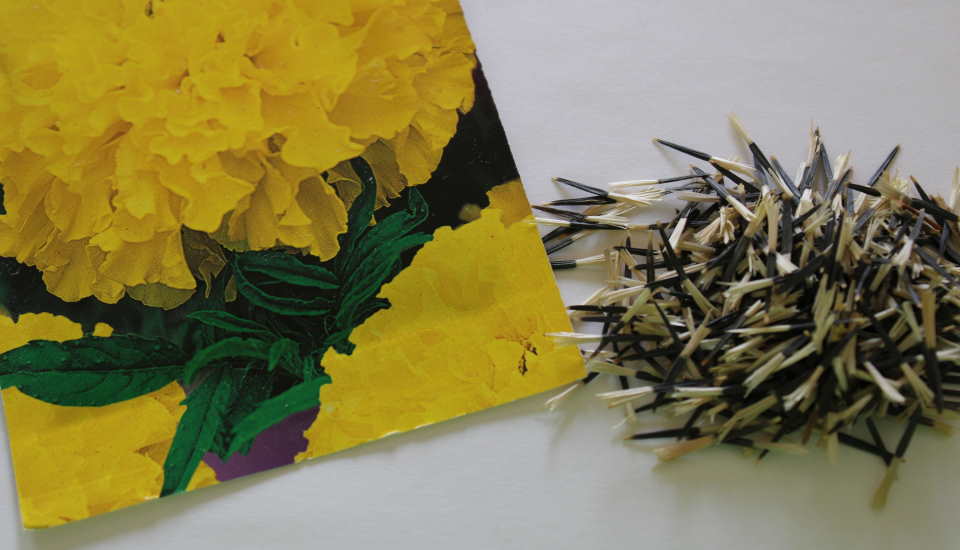
You’ll get a whole young generation of these plants if you plant the marigolds in the spring. Seeds saved during the winter should be used during the next growing season for maximum results. One thing to keep in mind when gathering marigold seeds: you can’t always expect to receive an exact replica of the parent seeds’ blossoms.
These plants germinate fast, so they don’t need to be started inside. If you sow the seeds straight into the ground, you may wish to space them out after they sprout to around 10 inches apart. The viability and germination rate of these seeds, like all seeds, will decline over time. This isn’t to say that your marigold seeds aren’t useful after a couple of years; go on and plant your seeds.
What Should I Plant Marigold Seeds or Marigold Plants?
As mentioned before, Marigold seeds are so easy to deal with. Because these flowers produce a large number of seeds per bloom, collecting marigold seeds may conclude in being covered in magnificent marigolds. By continually collecting from only a few plants, it’s easy to end up with enough seeds to fill a mason jar. Even children and elderly people can easily grow Marigolds! However, because the plants do not produce visible seed pods, locating the seeds can be difficult if you don’t know where to search.
How Should I Care for Marigolds?
These plants grow swiftly and effortlessly once planted, so less is more when it comes to caring for them. Leave the soil to dry between watering before thoroughly watering. Try to water them at the plant’s base. By not fertilizing the soil after spreading seeds, you can avoid a lot of foliage and fewer blossoms. It is not essential to deadhead.
However, if you opt to deadhead your marigold flowers, your plants will continue to produce all summer. Pinch off the tips of the marigolds once they’ve established themselves to help them grow bushier. This will prevent the plants from growing leggy and encourage them to blossom more. Mulch between plants to keep weeds at bay and the soil moist, especially when the plants are young.
Pests and Diseases of Marigolds
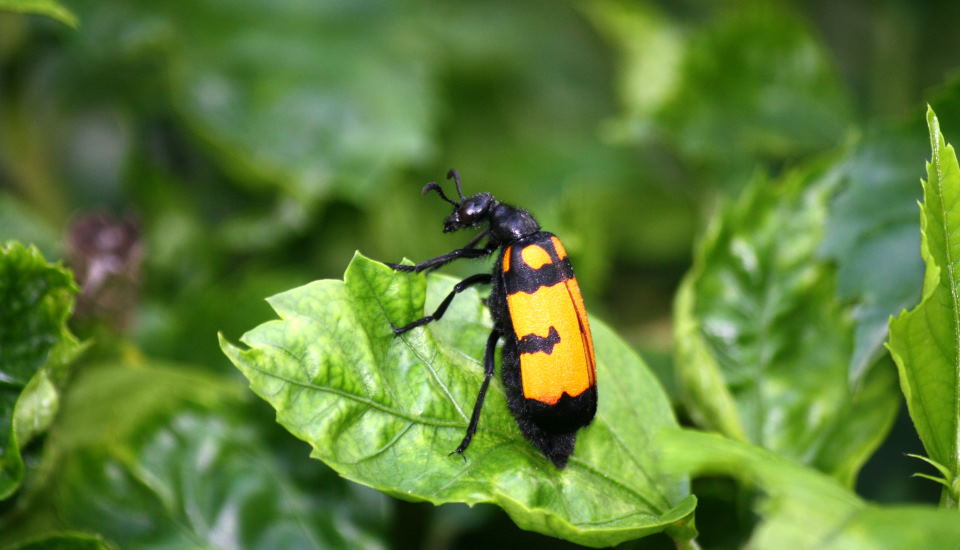
Marigolds are generally free of pests and issues. The more efficient way to put it in words would be; that if grown properly, marigolds have a minimal disease and pest concerns. Spider mites and aphids sometimes infest plants. Soggy soil or pest insects can cause various fungal infections, which are indicated by discolored patches, mildew, or wilting on the leaf.
Spider mites and aphids are usually solved with a spray of water or the use of an insecticidal soap every other day for a week or two. Minimize getting water on the plants’ leaves, keep weeds at bay, and plant in well-drained soil to avoid fungal problems. Problems are more common in American marigolds than in other varieties.
Why Do People Love Planting Marigold Seeds?
These plants have long been recognized as valuable plants in the garden by farmers and gardeners. The internal functions of the French marigold, particularly, have been shown to fight microscopic worms that damage the roots of garden plants, particularly root-knot and lesion microscopic worms.
To get the most out of this impact, don’t grow marigolds next to veggies. Instead, in the spring, plant a cluster of marigolds in the region where you expect to develop an autumn crop. Remove the marigolds in the middle to late summer and replace them with veggies and greenery for harvesting season.

These plants are known for their bright, colorful, and abundant flowers. Marigolds bloom as annuals in the summer and into the fall, usually until the first frost of the year.
People usually love planting these plants for their certain characteristics. These characteristics include mosquito repellent, honeybee support, low maintenance, beauty and etc.
Marigolds will enhance the appearance of your house or garden. As mentioned before, seeds or seedlings of these plants are really easy to grow. Marigolds have a characteristic that is bitter and has a pungent smell. This odor is caused by plant-based compounds such as pyrethrum, which is a common constituent in insect repellents.
These plants are beneficial to most garden plants and repel pests such as beetles, roundworms, and deer, all of which may inflict damage on your meticulously maintained garden. Marigold gardens may not require insecticide because marigolds instinctively prevent many insects. As an outcome, honeybees visiting the garden are not subjected to pesticides that are detrimental to them. In salads or other foods, marigold flowers lend a peppery flavor as well as color.
Conclusion
We have gone over every single detail about these vivid and radiant colored plants and their seeds, Marigolds and Marigold Seeds. So, it is safe to assume that after reading this article, you know everything about how to harvest and save them! We really recommend for you harvest and save your Marigold Seeds and use them over and over to lighten up your garden with beautiful blossoms.
You may also be interested in:

